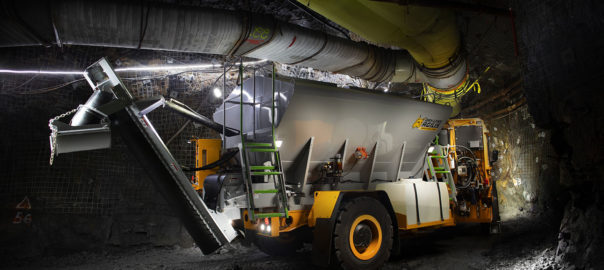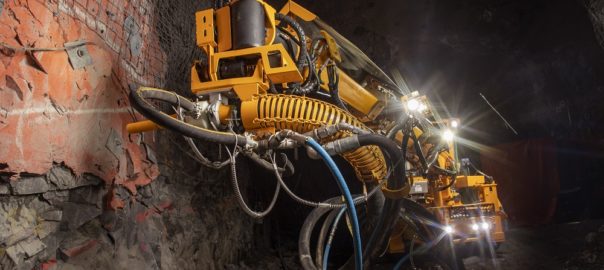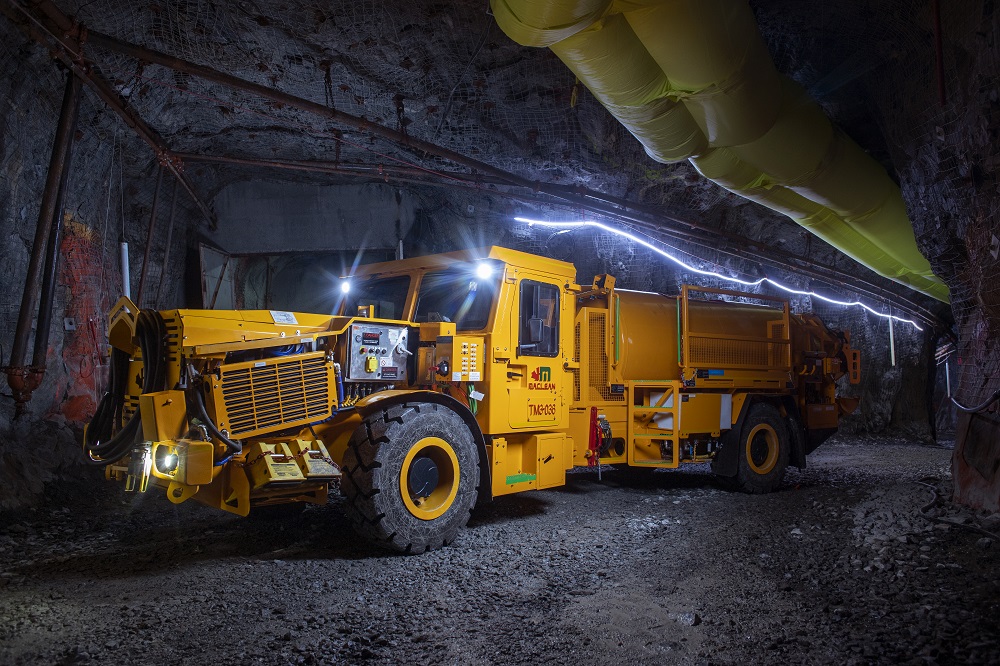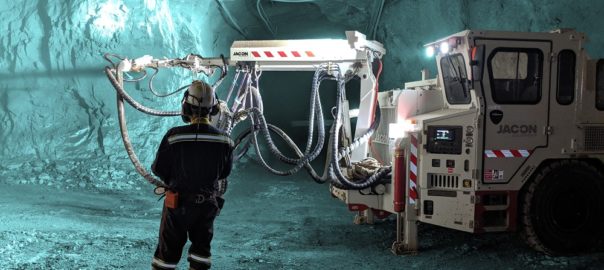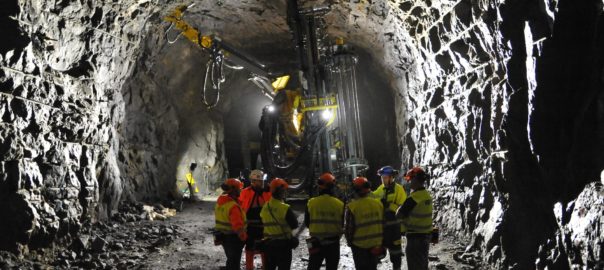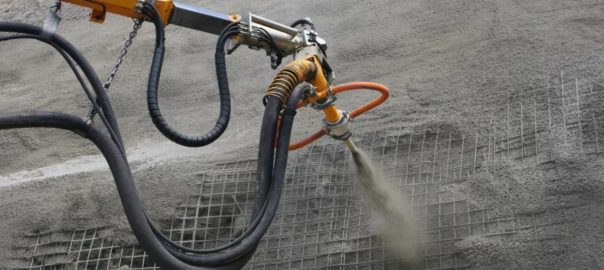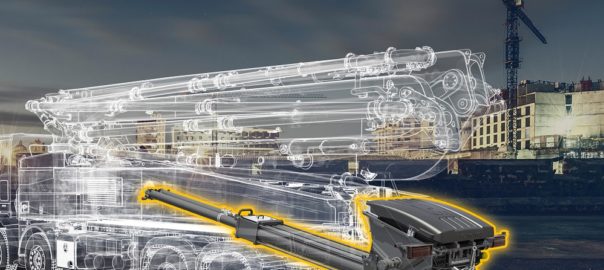MacLean and RufDiamond have officially launched the BP3 Mobile Batch Plant for fresh, in-situ concrete in underground mining and civil tunnelling projects.
The latest addition to the MacLean shotcrete product line combines the rugged, mobile equipment expertise of MacLean and RufDiamond with specialised dry-to-wet mix digital batching technology, MacLean says.
The BP3’s high-speed, high-capacity delivery mechanism offers up an efficient, near-zero waste solution for shotcrete quality control in the mining and civil tunnelling sectors.
Its design features a 6 cu.m dry hopper, a 500-liter water tank, a 3.3 m mixing auger, and digitally controlled mixing technology with up/down capabilities, plus a 30 cu.m/h output, all integrated onto a MacLean-quality mining vehicle carrier that can be either battery-electric or diesel-powered. The design also provides for ease of maintenance with electronic diagnostics, accessible fuel filling and grease points, MacLean says.
“This is truly a team effort with RufDiamond, one where our combined mobile equipment and underground mining expertise has developed something truly unique and needed,” Lavallee said in today’s press release. “Not every underground construction project has a surface batch plant operating at full capacity and with optimal quality control, and not every project has a slick line infrastructure for the delivery of concrete for shotcrete applications underground. This is where the BP3 Mobile Batch Plant steps in – offering up a solution for customers looking for another option for instant, quality mix for shotcrete spraying where and when it is needed.”
Adams added in the same press release: “This innovation with MacLean offers up a paradigm shift for shotcrete delivery in the mining and civil construction sectors around the globe. With the additional support of Bay-Lynx, our integration partner for the specialised dry concrete hopper, this partnership solves a specific problem around concrete delivery and quality in the challenging
underground environments of mining and tunnelling.”
Maarten van Koppen, Vice President of Product Management for MacLean, said: “MacLean has been innovating for 50 years in the underground mining sector and our shotcrete product line continues to evolve to meet the changing needs of underground construction projects worldwide. We’re thrilled to be partnering with RufDiamond to introduce and support this product around the globe, wherever mining or tunnelling projects are looking to optimise the efficiency of their concrete delivery and the quality of their shotcrete application.”







